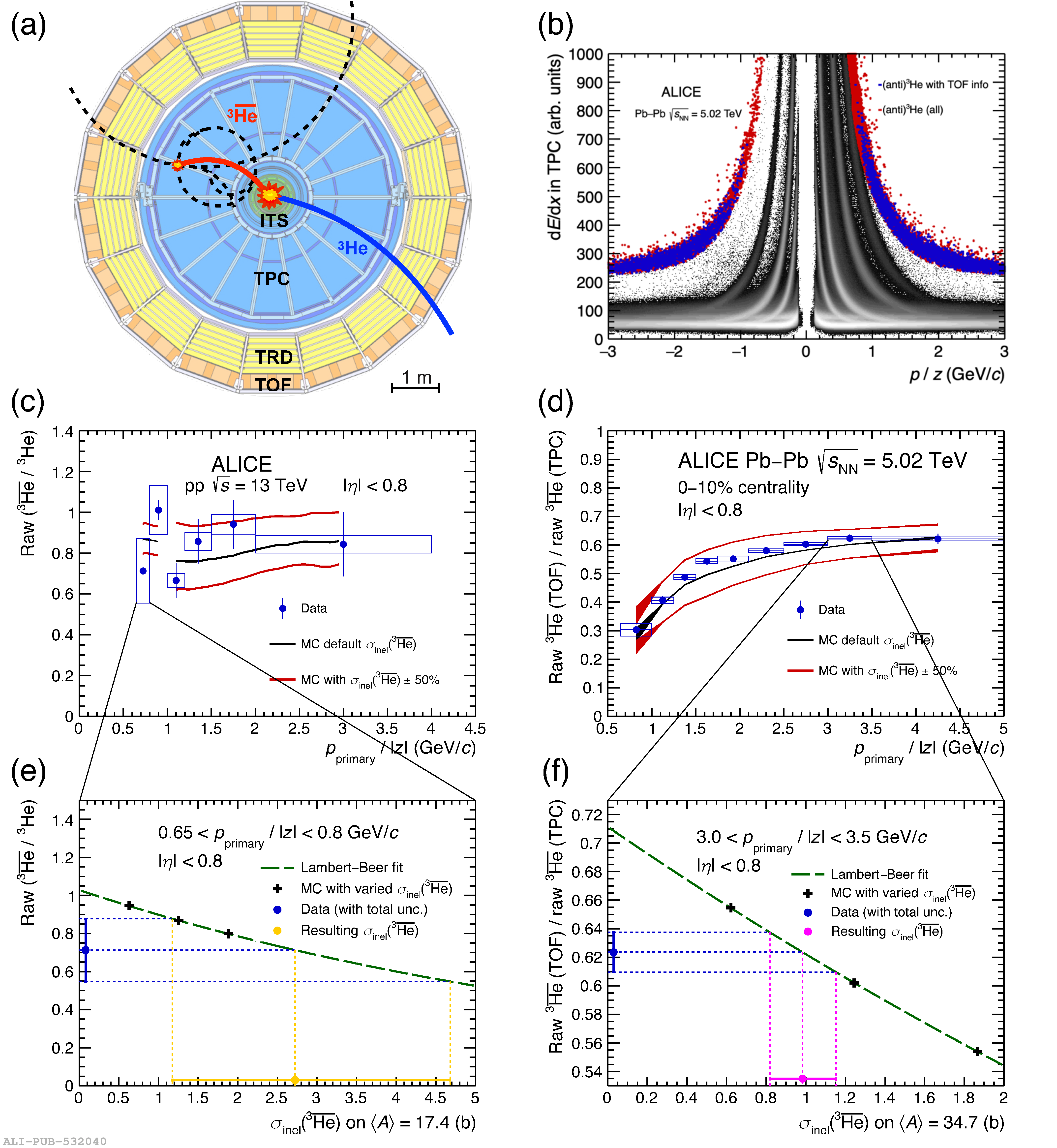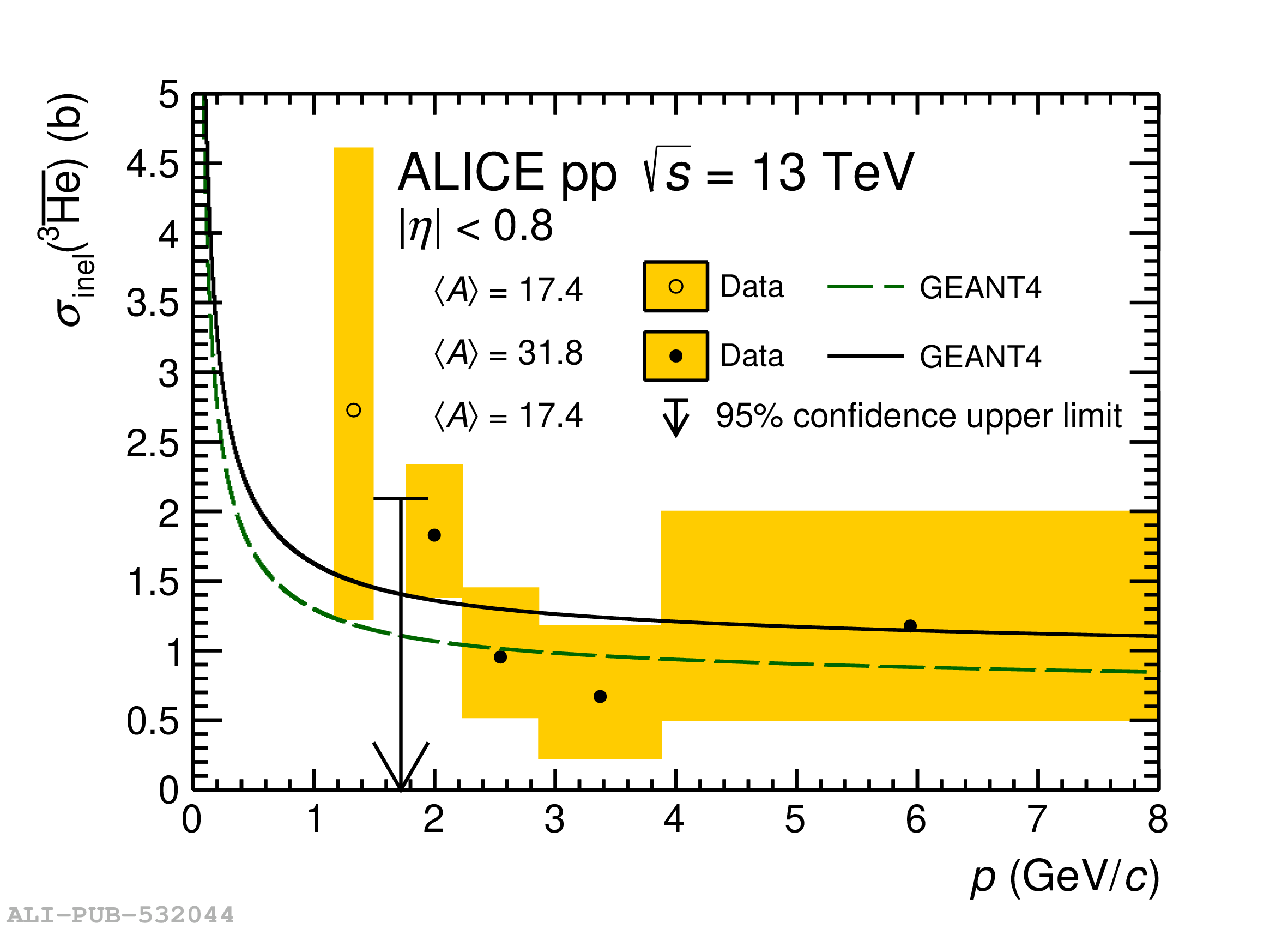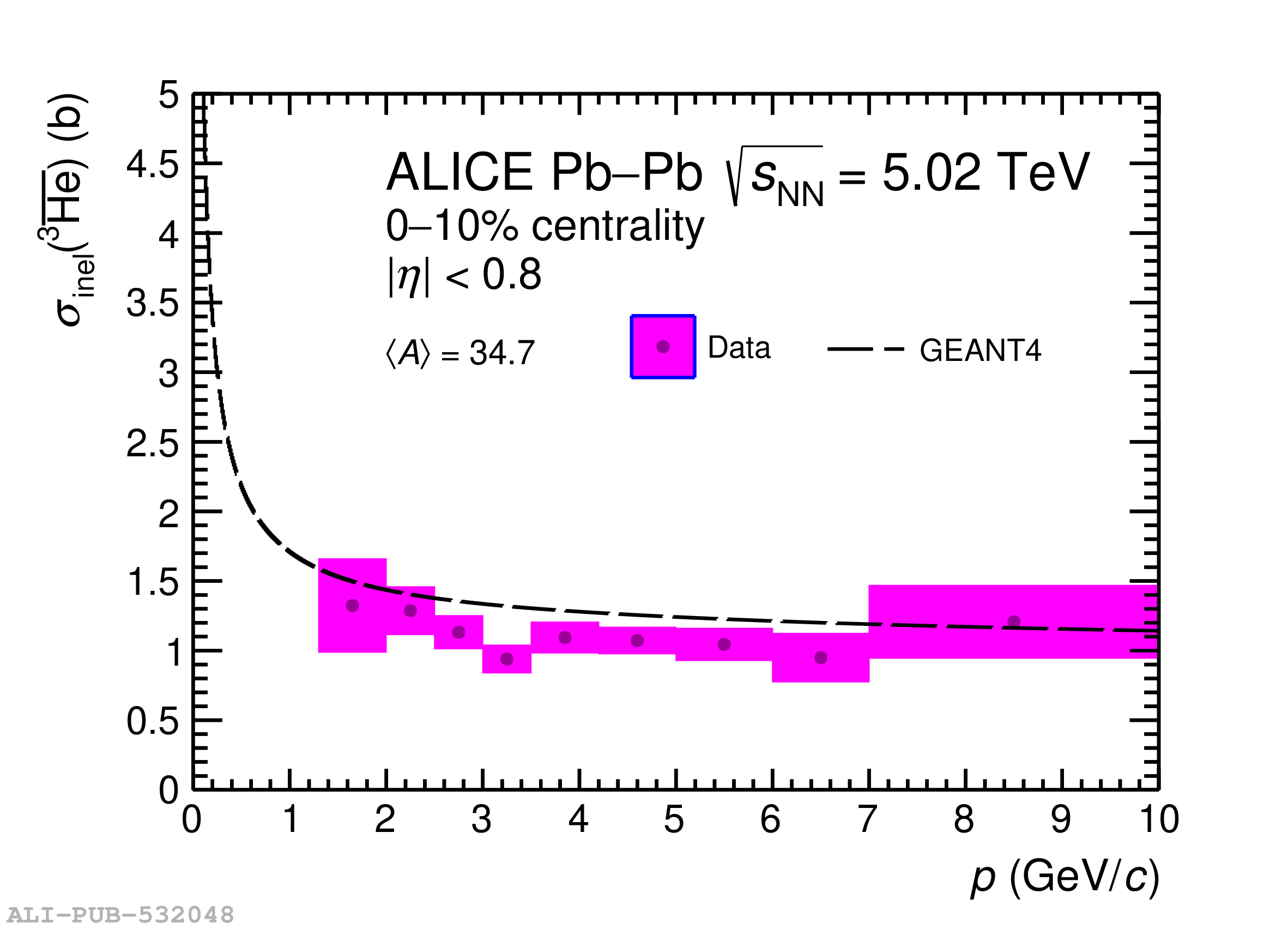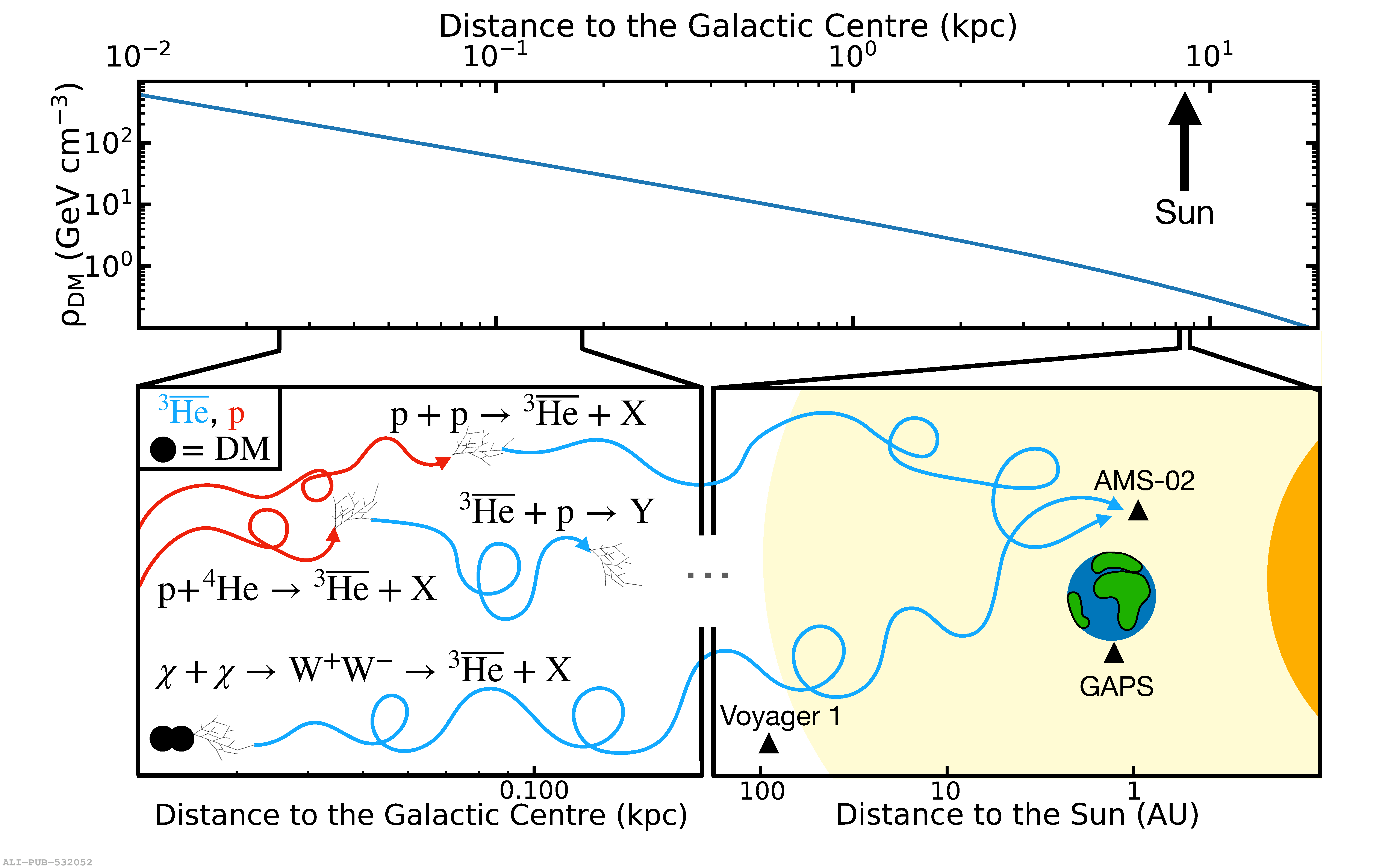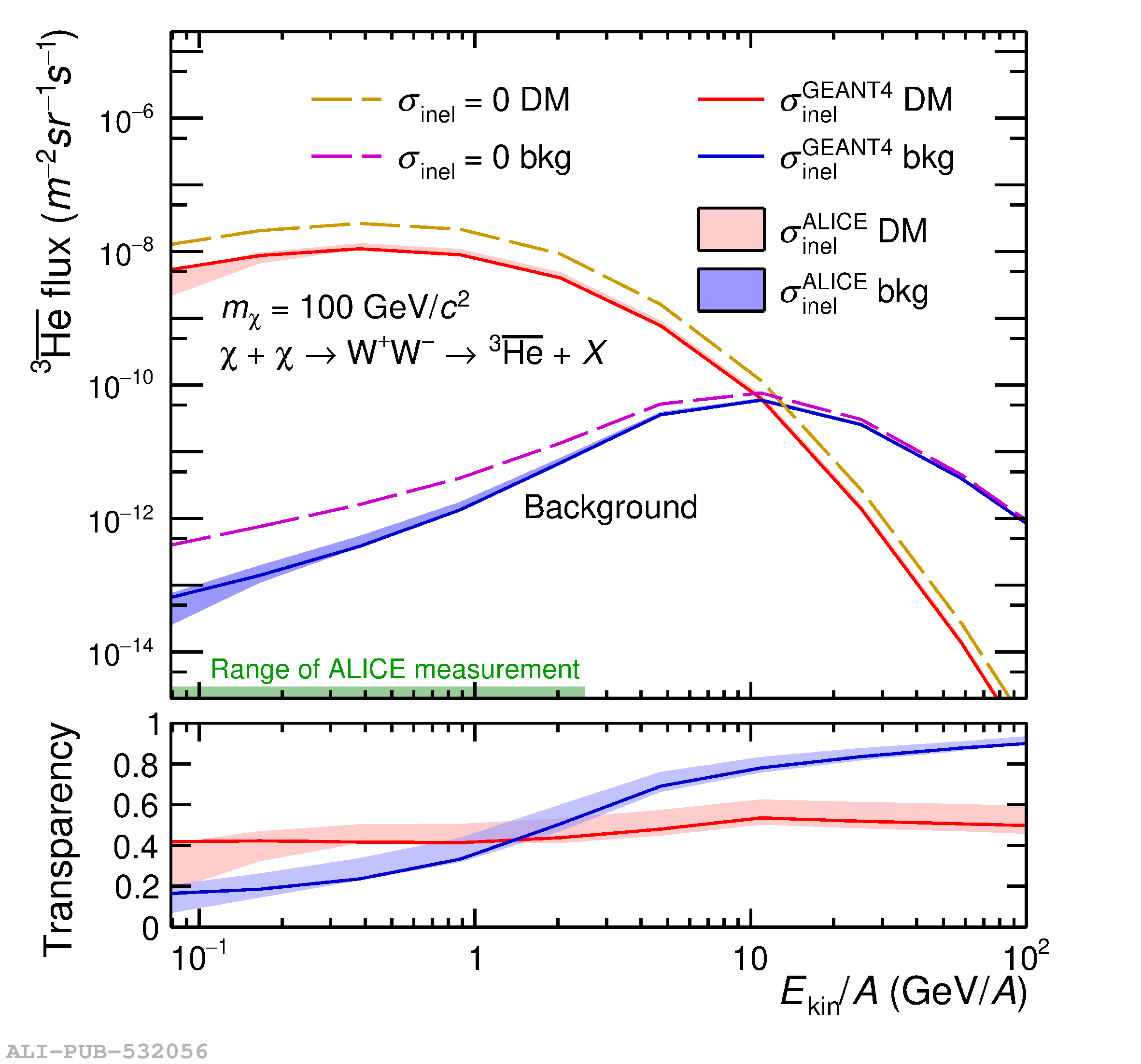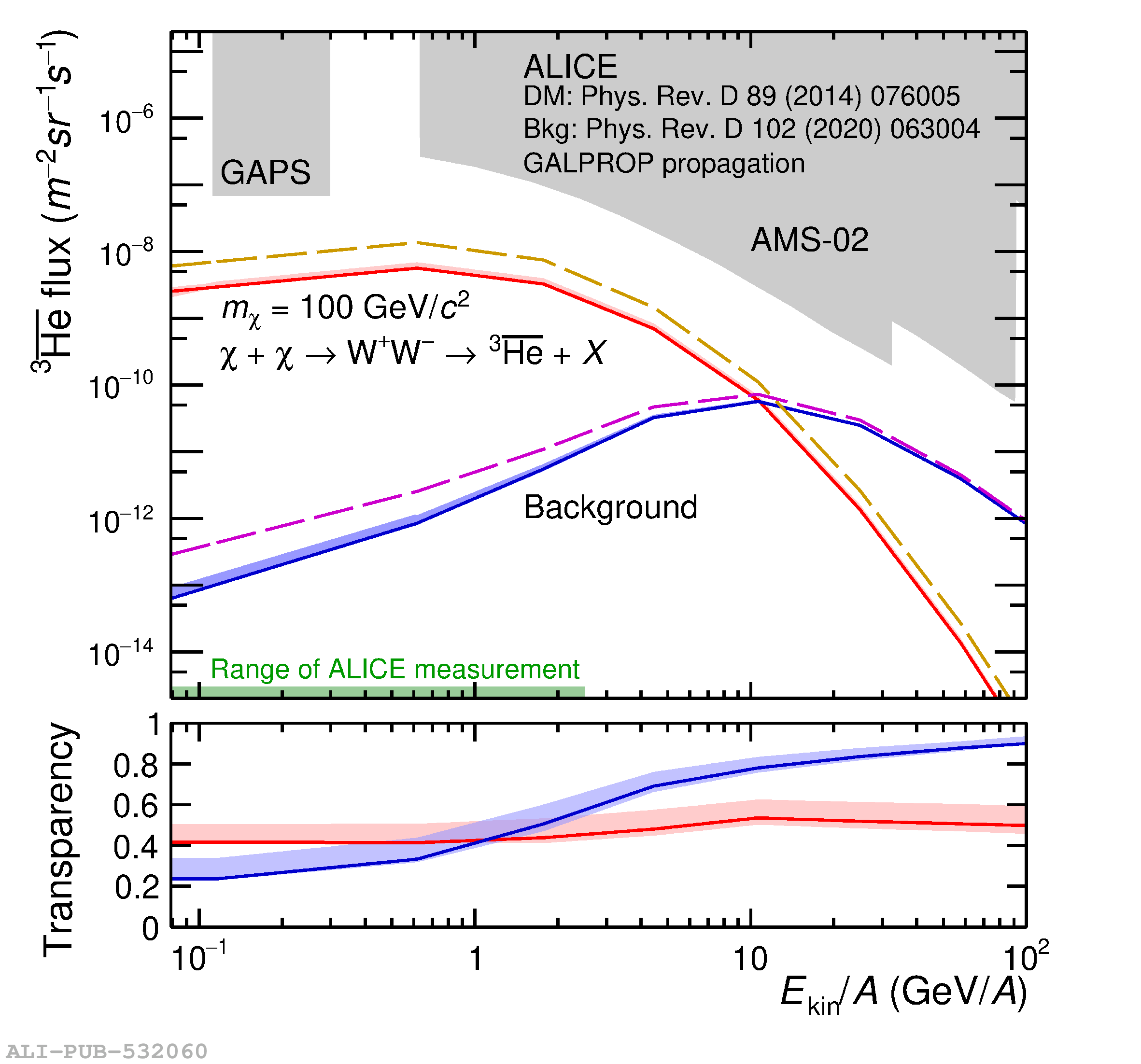In our Galaxy, light antinuclei composed of antiprotons and antineutrons can be produced through high-energy cosmic-ray collisions with the interstellar medium or could also originate from the annihilation of dark-matter particles that have not yet been discovered. On Earth, the only way to produce and study antinuclei with high precision is to create them at high-energy particle accelerators. Although the properties of elementary antiparticles have been studied in detail, the knowledge of the interaction of light antinuclei with matter is limited. We determine the disappearance probability of $^{3}\overline{\rm He}$ when it encounters matter particles and annihilates or disintegrates within the ALICE detector at the Large Hadron Collider. We extract the inelastic interaction cross section, which is then used as input to calculations of the transparency of our Galaxy to the propagation of $^{3}\overline{\rm He}$ stemming from dark-matter annihilation and cosmic-ray interactions within the interstellar medium. For a specific dark-matter profile, we estimate a transparency of about 50%, whereas it varies with increasing $^{3}\overline{\rm He}$ momentum from 25% to 90% for cosmic-ray sources. The results indicate that $^{3}\overline{\rm He}$ nuclei can travel long distances in the Galaxy, and can be used to study cosmic-ray interactions and dark-matter annihilation.
Nature Physics volume 19, pages 61–71 (2023)
HEP Data
e-Print: arXiv:2202.01549 | PDF | inSPIRE
CERN-EP-2022-023
Figure group

